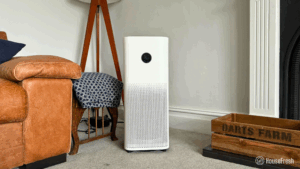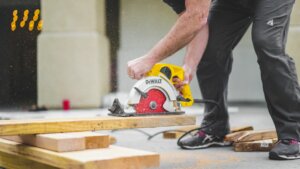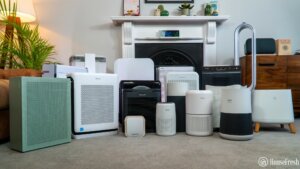Unlike most consumer products, the work an air purifier does is hidden from the naked eye.
You could think that an air purifier has cleaned the air in your bedroom, but unless you have a high-quality laser sensor, you could still be breathing in harmful tiny particles.
It would be great if you could trust manufacturer claims, but sadly manufacturers want you to buy their product and will say what they need to say to make it so.
That is why HouseFresh exists.
Objective performance testing
We use incense smoke and an optical particle counter sensor to track how fast air purifiers clean the air in our test room.
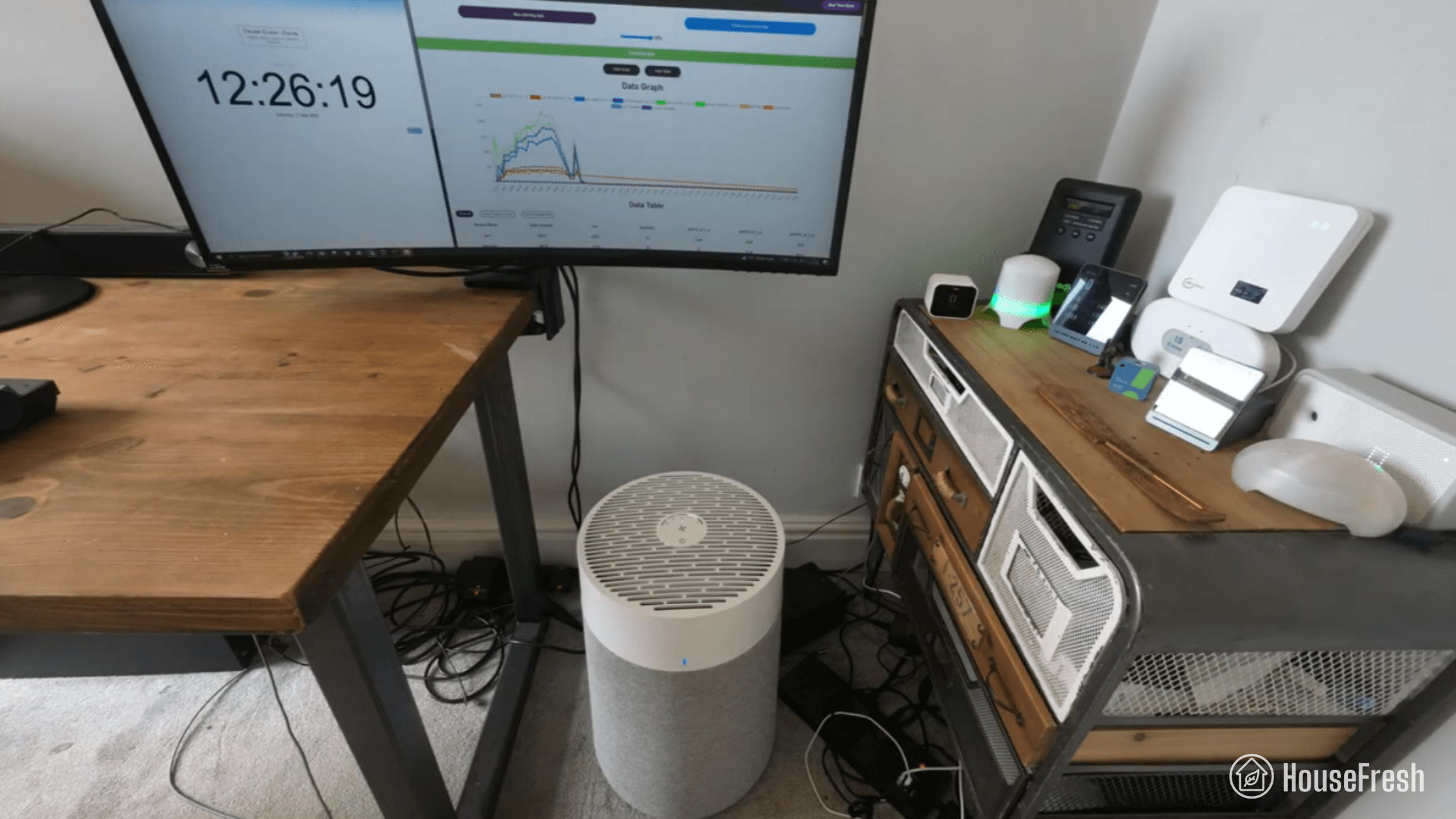
Since 2021, we have been testing the air cleaning power of air purifiers with the help of PurpleAir laser sensors. We built our own tool to connect to the PurpleAir API, so we can pull regular readings of PM1.0, PM2.5, and PM10.0 particle levels in our 728 cubic ft. test room while we are running a test, which allows us to produce performance graphs like this:
We upgraded to the PurpleAir Zen sensor in 2024 after using their Touch sensor for three years. We re-tested all our air purifiers with the new Zen sensor, which took us a few months but it allowed us to collect fresh particle removal data.
We moved to the PurpleAir Zen sensor because it is more accurate than the Touch as it utilizes PurpleAir’s PA-II sensors and has two PMS6003 optical particle counter sensors for improved accuracy. Smart Air recently confirmed the PA-II to be the most accurate sensor in a study that compared accuracy across 55 different sensors.
In addition to upgrading the sensor, we also moved to filming all our particle removal tests, making sure to include the creation of the graph in real-time on screen.
Comprehensive sound testing
We use a sound level monitor to measure the decibels of noise the air purifiers generate when running at each fan speed.

While air cleaning performance is the most important feature of an air purifier, we also consider sound levels generated because we know that noisy devices are likely to gather dust in a corner without being used regularly.
Many air purifier manufacturers include sound in decibels when running the device at the highest fan speed based on their own tests. Unfortunately, we have found that some brands will understate these figures, so we know it’s important to gather our own data.
We use our trusted sound level monitor to record noise levels in decibels generated by the air purifier when running at every fan speed from 3 ft. away.
As with our air cleaning performance test, each device is tested for sound in the same location and using the same tools, so results can be compared across different brands and models.
Since 2024, we have moved to film this test as well and in 2025 we started uploading all tests as soon as they are ready to our Patreon, for those who don’t want to wait till the full review is out.
Accurate energy consumption testing
We use our energy meter to record how much electricity the air purifiers consume in watts when running at each fan speed.
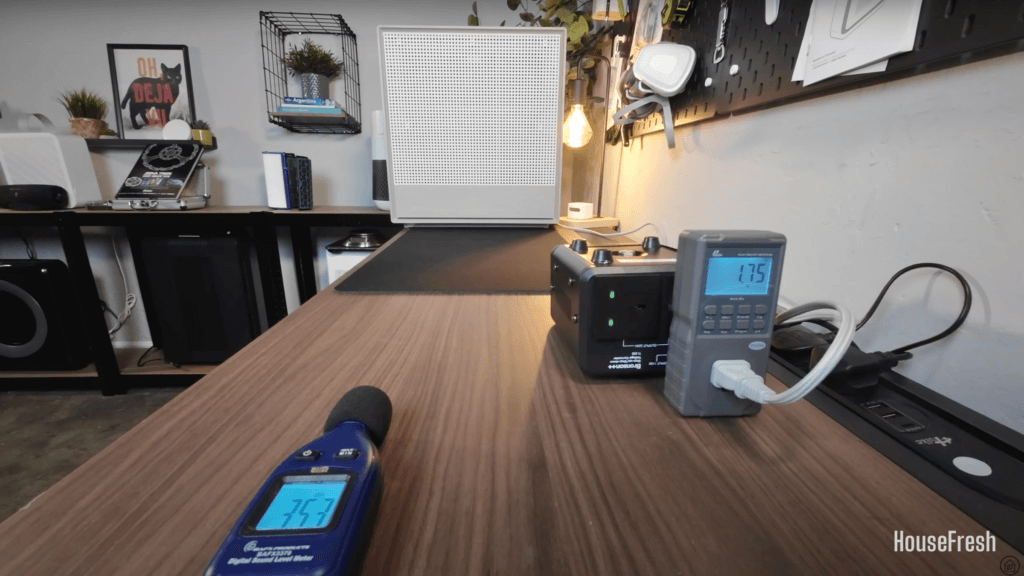
Air purifiers generally need to be left running 24/7, especially when dealing with issues such as allergies or outdoor air pollution. However, some of these devices have power-hungry motors and fans that can result in hefty energy bills.
That is why we test each device with an energy meter to measure how much wattage is pulled at each fan speed, including sleep mode and standby functions.
Since 2024, we started conducting sound and energy consumption tests at the same time and all tests are recorded in video, so readers can see how much electricity is pulled.
Associated long-term costs
We calculate how much money you will spend replacing HEPA and activated carbon filters across 12 months.
Another cost that consumers buying an air purifier for the first time might not be fully aware of is the cost of replacing filters. Small air purifiers might require two filter changes per year, and since filters range from $50 to $100 per filter, the costs can add up quickly.
That is why we always calculate filter replacement costs for every air purifier we review, sharing both genuine and generic filter prices.
We use manufacturer data on filter lifespan and always stick to the shortest estimate (e.g. if the manufacturer states 6-12 months, we will calculate filter replacement costs with 6 months as our base).
Once we have the latest filter price data and the added costs to your energy bill, we can estimate yearly running costs so this information can easily be compared across devices.
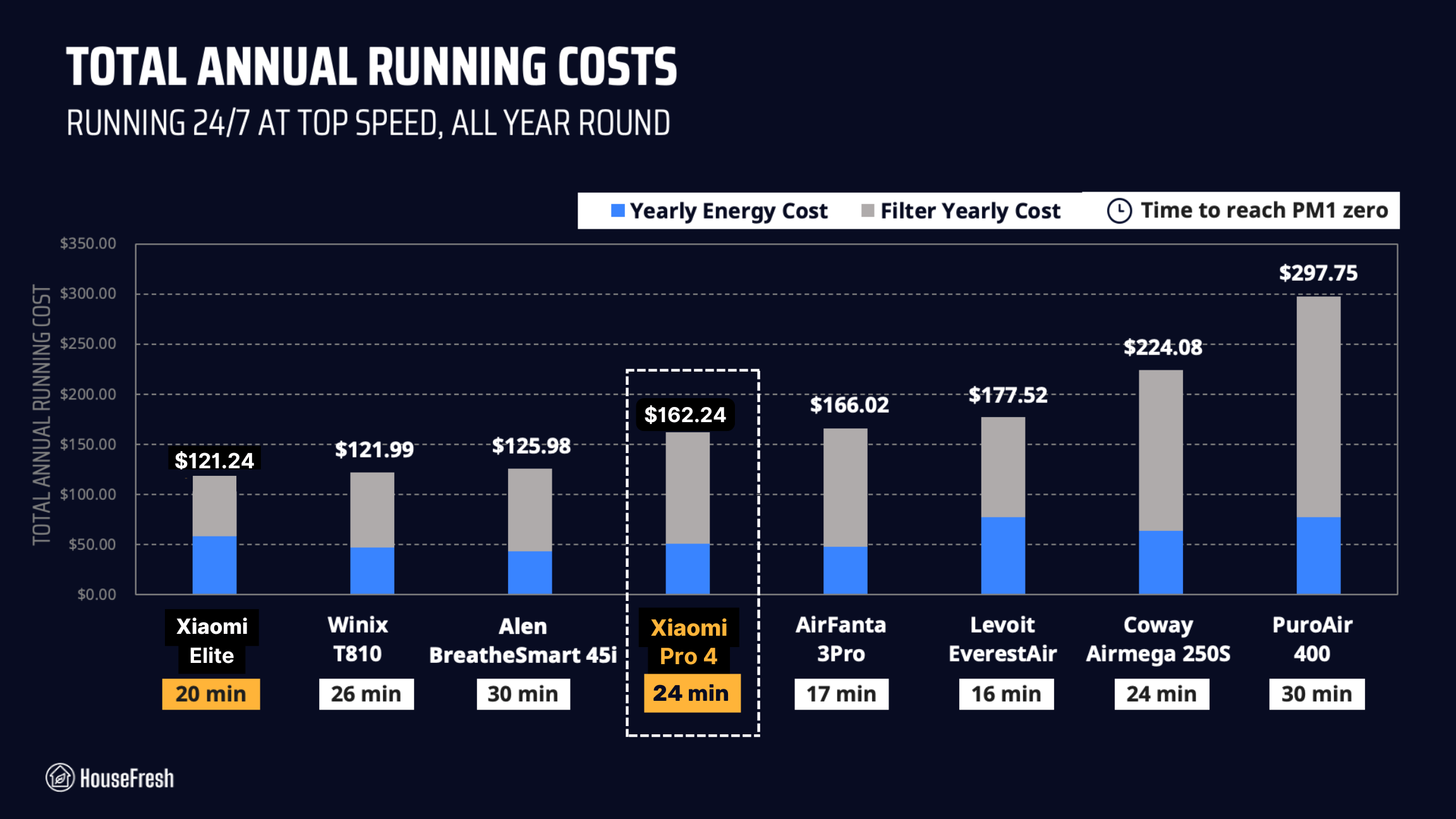
Quality-of-life features, materials and first-hand experience
We use the air purifiers in our home, putting all the features to the test in real-life scenarios.
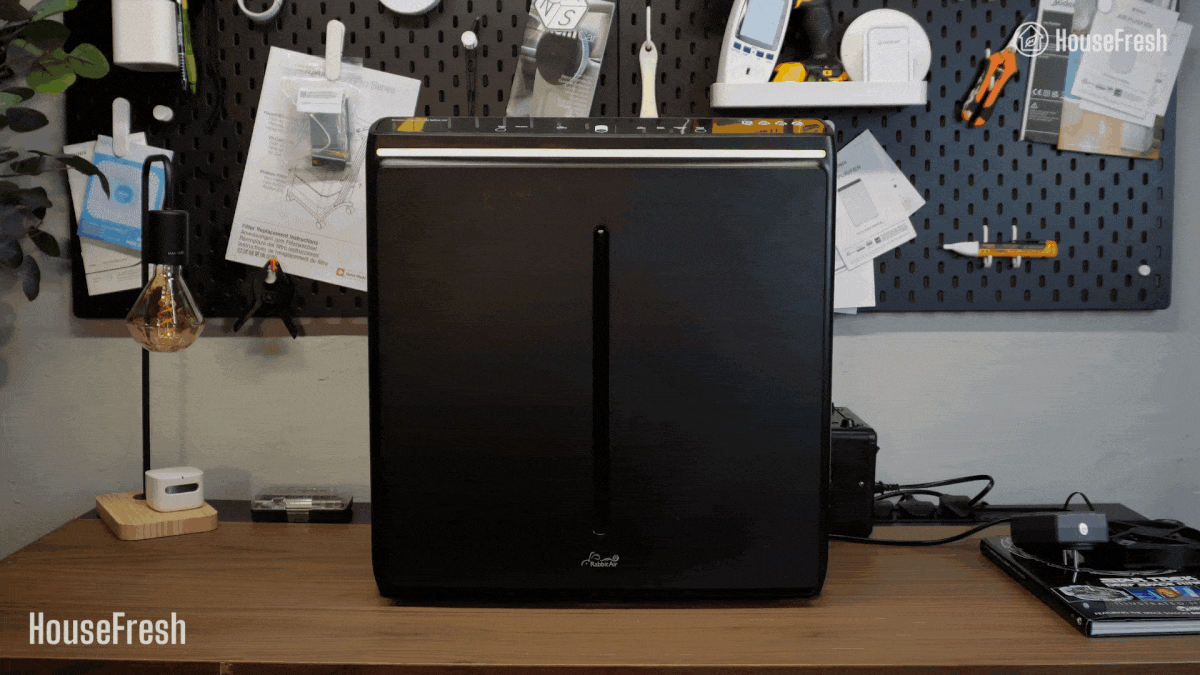
If you have never used an air purifier before, you are likely unaware of the many features that can benefit you in the long term.
By using these devices in our homes, we can test out auto-modes in real time, use their smartphone apps from our phones, run them at night with sleep mode on, experience how easy (or hard) it is to move them around the house, and test how straightforward it is to clean and maintain the filters.
This allows us to write comprehensive reviews of what it’s like to live with these air purifiers day in and day out. It also gives us enough time to uncover faults and issues that won’t show up during a simple photoshoot of the unit.
But we don’t stop there. We are happy to open the air purifier to explore its internals when something doesn’t sit right.
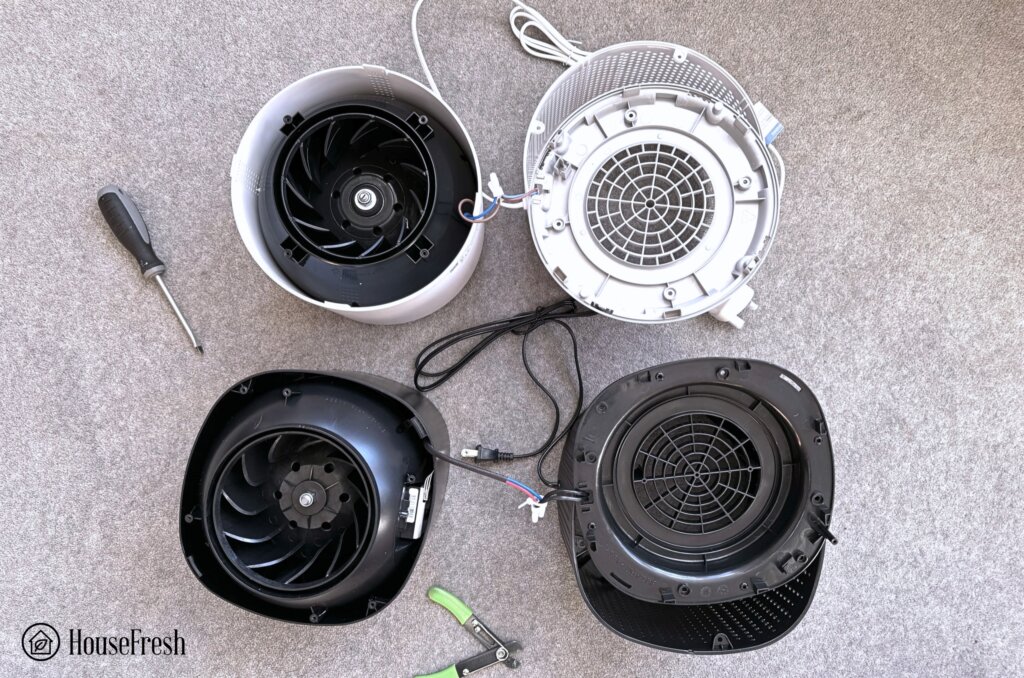
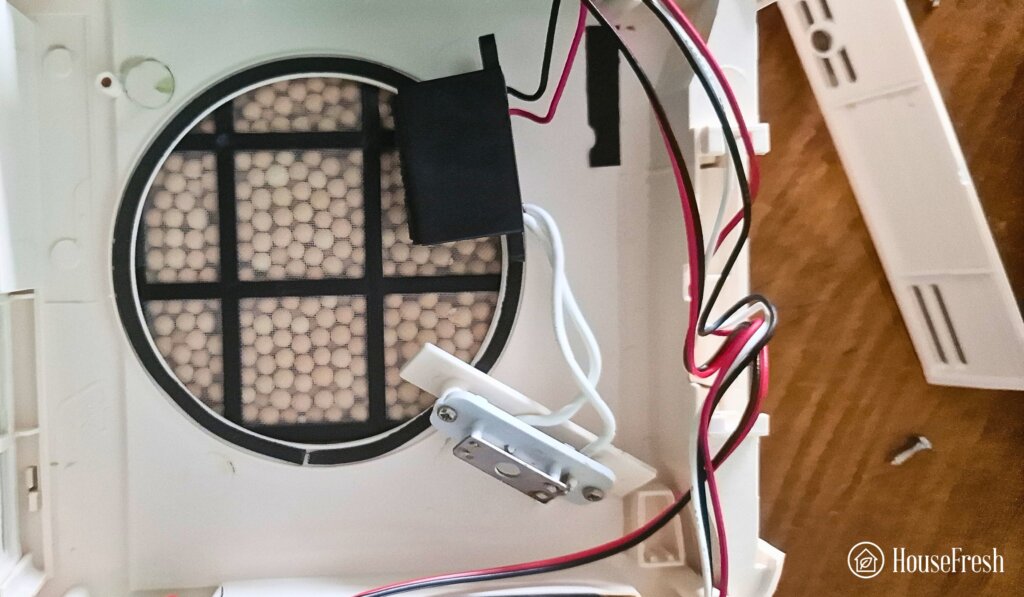
This is how we can identify the different parts and materials being used, highlighting issues that you won’t see when looking at the air purifier from the outside.
Estimating PM1 CADR scores at different fan speeds
We use the data from our particle removal tests to estimate the clean air delivery rate of each air purifier at different fan speeds.
CADR tests completed by the Association of Home Appliance Manufacturers are conducted at full power, so those CADR scores you see in specs tables and marketing materials only apply if you are going to use the air purifier a top speed.
The reality, however, is that most air purifiers are very loud at top speed so you are unlikely to use them at full power in your day-to-day.
That is why, in 2025, we have started estimating PM1 CADR figures based on the data from our particle removal tests, taking into account the natural ventilation of our 728 cubic feet test room.
Calculating the HouseFresh score
We have developed a weighted scoring system that turns all our data into a scorecard for each air purifier.
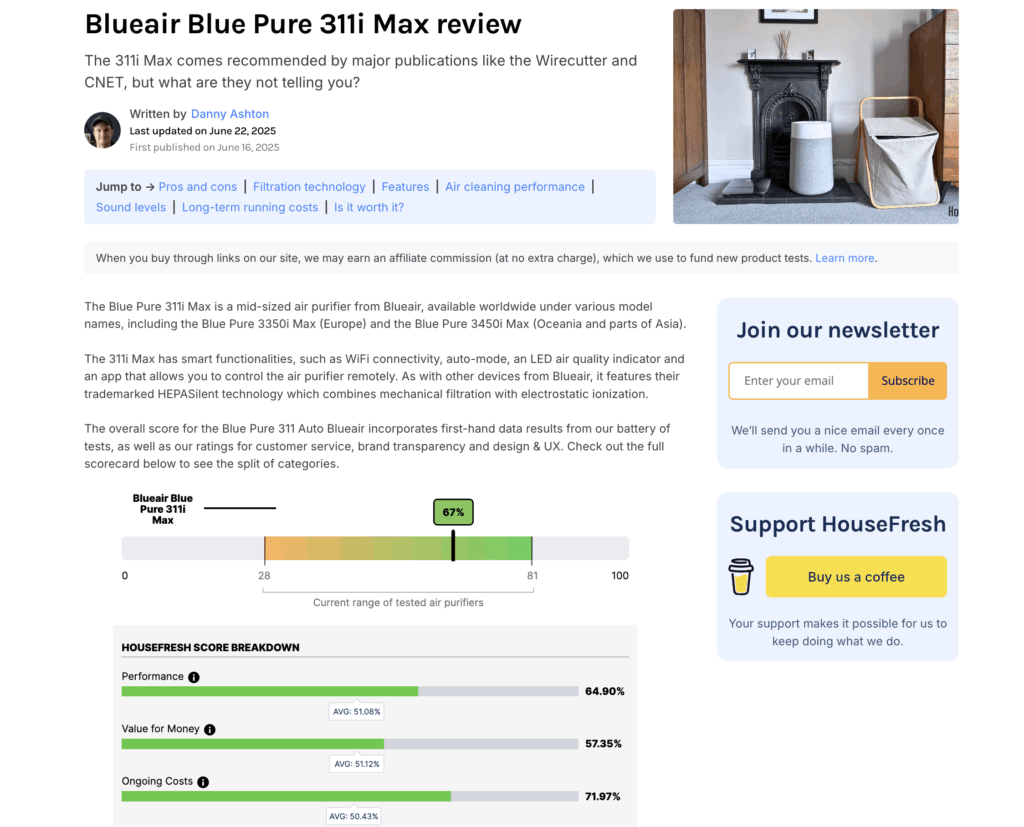
In 2025, we started calculating an overall score for each air purifier we review that incorporates first-hand data results from our battery of tests, as well as our ratings for customer service, brand transparency and design & UX. This is a weighted score so not all categories have equal importance and, in some cases, the lack of certain features could lead to points being taken away.
Here is a breakdown of each of the categories:
- Performance: How well a model cleared our 728 cubic feet test room of PM1 particles when running at its highest and sub-45dBA speeds. A model that scores well for performance offers excellent air cleaning performance even at low fan speeds.
- Value for money: How much air cleaning power the model offers per dollar spent both when running at top speed and its highest sub-45 dBA speed. A model that scores well for value for money has a low cost per CADR.
- Ongoing costs: How expensive it is to run the model in the long term, based on annual electricity and filter replacement costs. A model that scores well for ongoing costs has lower yearly maintenance costs.
- User experience & design: This score includes multiple aspects of UX and design, such as noise levels, filter quality, features, maneuverability, filter lifespan and usability.
- Brand transparency & trust: How trustworthy the manufacturer behind this model is, based on how well established the company is, how easy it is to track down the organization behind the brand, and how informative and accurate they are in their website and marketing. This factor is not included in the scoring calculations of DIY purifiers, as it would be unfair for it to affect the overall score.
- Customer service: How good the experience is as a customer, based on customer service response times, availability of FAQs and manuals on the manufacturer’s website, ease of return process and refund policy. This factor is not included in the scoring calculations of DIY purifiers, as it would be unfair for it to affect the overall score.
You can explore our leaderboard in the chart below:
We are still refining our scoring system and our interactive ranking, so if you have any feedback, please drop a comment below.
Assessing the value of a device with comparable data
We use our first-hand data and long-term experience with every unit we have ever tested to decide whether a device will be good value for your money.
Since the start of the COVID-19 pandemic, the air purifier industry has been flooded by overpriced devices sold to unsuspecting customers with clever marketing tactics.
Consumers today are being duped into buying useless gimmicks with the help of untested claims and even outright lies, massively overpaying for what is basically just a fan and a filter.
By using a repeatable and comparable approach to testing, we hope to let the data guide more people away from these overhyped devices and toward those that effectively clean the air for a fair price and without excessive noise or energy usage.
We also understand that not everyone has hundreds of dollars to spend on an air purifier, so we are always on the lookout for devices that cost less but still perform well, including DIY options like the CR Box.
We started testing air purifiers at the end of 2020 and are always looking at ways to improve. If you have any suggestions for how we can improve our testing and reviews, then be sure to reach out to me directly danny@housefresh.com


